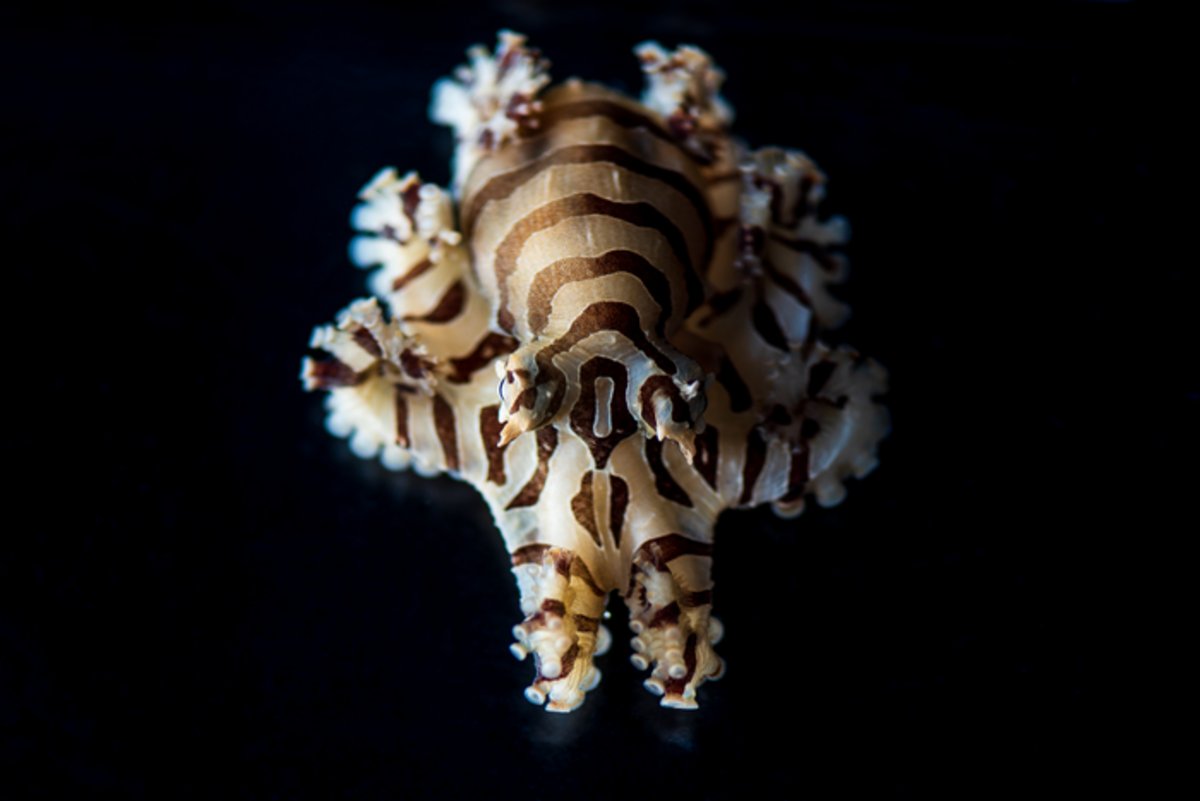

It’s hard to identify individual members of another species, unless they have sufficient visual distinctions. Every squirrel looks more or less the same, herd animals seem like a hoard of clones, and you may have once mistaken a lookalike stray for your pet. But when you look closely, small details characterize an individual from the rest of their species. Researchers at the University of California Berkeley proved the same applies for a rare species of octopus.
The team discovered that the Pygmy zebra octopus has stripe patterns as unique as human fingerprints, allowing even humans to tell them apart. They also found that after about two weeks of age, their stripe patterns become permanent and distinctive. They published their recent findings in PLOS One.
[Related: What human and octopus brains have in common]
Octopuses’ intelligence, complex behavior, and color-changing abilities have led the animal into the limelight, both inside academia and out. There are over 300 species that live off the coasts of every continent. One is the Pygmy zebra octopus (Octopus chierchiae), also known as the lesser pacific striped octopus, coming in at about the size of a grape when fully grown. It has brown and tan stripes, fitting its name, and is native to the Pacific coast of Central America.
Researchers confirmed that each individual has a stripe pattern unique to them by photographing 25 Pygmy zebra octopuses in a lab for nearly two years. They took photos of the specimens every week, from hatching to adulthood. Then, they gathered 38 untrained volunteers to participate in a survey to see whether or not they could identify individual octopuses based on their stripes. The survey consisted of 20 photo comparisons, each taken no more than 25 weeks apart.
The volunteers’ average accuracy was 84.2 percent, and about half of all participants scored at least 90 percent. Additionally, no individual question was answered incorrectly by a majority of participants. By analyzing stripe patterns, the volunteers’ accuracy shows that a majority of people can discern one individual from another. Given the time difference between photos, the results also indicate that people can identify an individual after several months have passed, even between juvenile to adult life cycle stages.
[Related: Female octopuses will chuck seashells at males who irk them]
Tracking wild animals is a challenge for many researchers, but octopuses are especially challenging to monitor. Their reclusive and mysterious behavior make them hard specimens to track. And without some sort of tag or marker, researchers struggle to identify individuals if seen again. Cephalopod researchers employ various, sometimes invasive identification techniques, including tagging, tattooing, and branding. All these practices at the very least risk harming octopuses’ soft, delicate tissues and causing unnecessary pain. Tagging, one of the least harmful options, is also imperfect. Octopuses can easily slip out of tags without bones, and if it’s attached to their flesh, they can even rip them off.
If researchers could track octopuses by photography alone, it could be a game changer for the field. In the study, the researchers highlight photography as a “a largely inexpensive, non-invasive, non-extractive, and widely accessible technique to produce high-quality data” and recommend it as an identification and tracking method for future research.
